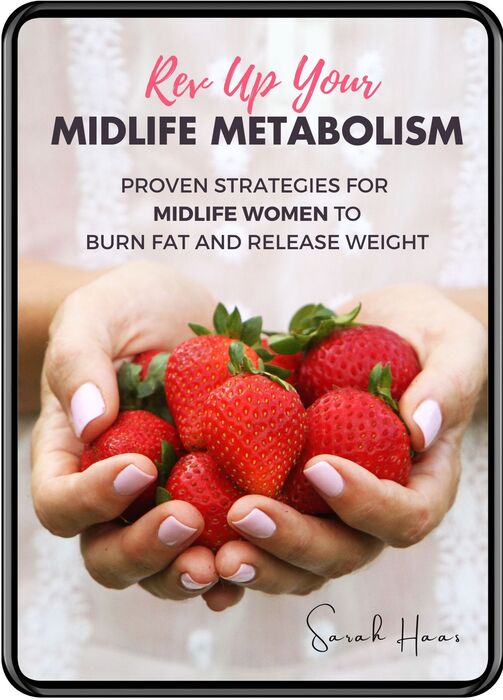
Sugar. It’s everywhere and we love it soooo much. It’s a pick-me-up. It’s an energy boost. It’s a comfort. We know it’s not good for us, but the incessant cravings make it almost impossible to resist.
If you’re struggling to release weight and are dealing with low energy, anxiety or mood swings, too much sugar in your diet is a likely culprit.
Willpower isn’t the problem.
Many women I work with have a lot of guilt and shame around their perceived lack of control over their cravings and their eating habits. They beat themselves up for not having enough “willpower,” chipping away at their own happiness and self-esteem. The need to feel better further ramps up cravings for a sugar boost. Inevitably self-medicating with sugar only leads to more shame and blame. And the vicious cycle continues.
So how do we break this cycle? And, more importantly, how do we reclaim our confidence, self-love and self-acceptance? Do we just need to work harder and be more committed? Buckle down and have more discipline?
We’re actually already working so hard it’s like we’re in an abusive relationship with our own bodies. In order to dismantle sugar addiction (yes, it’s an addiction) we have to address not only the physiological, but also the emotional components of our behaviors. Once we start to dig a little deeper and get to the root of the problem, we can start to gain control and take our power back.
Here are my top 5 tools to say adios to sugar:
1.Be gentle with yourself.
Blaming and punishing doesn’t give us motivation or help us take positive action. As human beings, everything we do, we do for a reason. The first step is to be curious instead of critical about our cravings.
Cravings are our body’s way of letting us know something is out of balance. Think of them as our own built-in “check engine” light. Knowing this, we can learn to work WITH our bodies to figure out the underlying causes of the cravings.
- Sugar cravings are natural. Long before food processing, the only source for sweet tastes was plant foods like sweet potatoes, berries and fruit – all great sources of nutrients, energy and fiber.
- The food industry has taken full advantage of our natural propensity for sugar. It’s been added to almost everything. And not just a little bit. The result is we’ve become addicted to the supercharged sweet taste and natural sugars no longer pack enough punch.
- Sugar is addictive. It contains natural opioids, just as strong as those found in cocaine, alcohol and nicotine. When we consume sugar, our brain releases feel-good hormones, like dopamine, which can override one’s self-control. Sugar gives you an initial high, then you crash, then you crave more, so you consume more.
2. Identify where you’re getting your sugar.
Before you can break your sugar habit, you need to know exactly how much sugar you’re consuming and where it’s coming from. You should aim to get no more than 25-40 grams of added sugar per day (that doesn’t include naturally occurring sugars like those found in fruit or dairy). That’s equivalent to about 6-10 teaspoons.
One, 12-ounce soft drink contains about 10 teaspoons of sugar!
Obviously, we know cakes, cookies and candy are major culprits. And sugar goes down so easily in those sweet, frothy coffee drinks topped with whipped cream and drizzled with caramel. But you may not realize how much is also hidden in the foods that we think of as healthy, like granola bars, peanut butter, yogurt and sports drinks.
Sugar by any other name is still sugar. Start reading labels and become familiar with sugar terminology. There are over 60 different names for sugar and these include corn syrup, high fructose corn syrup, sucrose, dextrose, agave, barley malt syrup, cane juice, honey, molasses, and brown sugar.
Sugar in disguise. Remember that many of the carbohydrates we consume like bread, bagels, crackers, chips and pasta are usually highly refined and act just like sugars in the body.
3.Focus on what your body needs instead of what it doesn’t.
I don’t know about you, but as soon as someone tells me I can’t have something, I want it all the more. When we wake up and immediately tell ourselves NOT to eat sugar, we put all our focus on that. And where we put our energy is where we’ll be drawn. Hello cravings!
ADD IN the good stuff to crowd out the not-so-healthy.
If we flip our focus to making sure we’re ADDING IN everything our body needs to be healthy every day, we’re moving forward and taking positive action to improve our health and feel better. See how that feels so much more powerful and in control?
Here’s what your body’s REALLY craving:
- Nutrient-dense foods. All calories are not created equal. If you’re eating food that’s devoid of nutrition, you could be overeating but still be starving. Your body will continue to cry out for what it needs in the form of hunger and cravings. When you add in real, whole, nutrient-dense foods like protein, healthy fats and whole grains and you’ll feel full and satisfied and your cravings will naturally go down.
- Plenty of hydration. So many of us are walking around dehydrated and thirst signals are often misinterpreted as hunger and sugar cravings. Aim to drink half your body weight in ounces per day.
- Rest. Obviously, not getting enough sleep makes us tired the next day. So we look to sugar and refined carbohydrates, which absorb quickly into the bloodstream, to give us a quick boost of energy. But the energy is short-lived and leads to a crash. Then we’re reaching for more sugar and the roller coaster continues.
4.It’s not just about the food.
As much as we love sugar, sugar loves us back. It’s always there for us and it doesn’t disappoint. We use it to deal with stress and anger, to comfort us and to “fill us up” when we feel lonely or sad.
It’s nostalgic and soothing. Think of how a crying child is often given a lollipop to quiet them down. And when you’ve just suffered a breakup, a friend brings you a pint of Ben & Jerry’s.
We all need and deserve to feel good. And eating sugar brings relief from pain and arouses feelings of warmth and connection, which is why we return it again and again.
Once you start addressing the emotions and deeper causes of your cravings, you can start ADDING IN what you’re missing in your life to crown out the need to self-medicate with food.
Do you need companionship, deeper connection or better relationships? Are you making time for joy, fun and creativity? Do you get enough rest and relaxation? How’s your stress level?
Only when you start “feeding” yourself what you really need, do you begin heal your relationship with sugar.
5.Do a sugar detox.
I know it can sound a little daunting to go cold turkey, but cleansing the sugar out of your body can be a great reset for your taste buds and help you start to re-wire your brain. And all it takes is a few days to flush it out!
Once your palate recalibrates, you’ll be amazed at the sweetness of natural sugars in fruits and vegetables that your taste used to be dulled to. Apples taste like candy!
And when you remove the emotional crutch of using sugar to stuff down your feelings you can start to see what comes up and take steps toward giving yourself what you’re missing.
Don’t deprive yourself forever.
After all, what’s life without a little chocolate?! After you detox your body, you’ll be able enjoy the sweet stuff, in moderation, AND be in control instead of constantly being at the mercy of your cravings.
Deprivation leads to binges.
A well-balanced diet includes all types of food. Food for nourishment, as well as enjoyment. It also honors the many roles food plays in our lives. From nourishing our bodies on a cellular level, to tradition and culture.
If it’s someone’s birthday, have a piece of cake. If it’s Saturday night and you’re having some dessert on date night, don’t feel bad. You don’t need to miss out on meaningful moments and special experiences.
Life is not all or nothing, there’s a lot of living in the grey areas.




